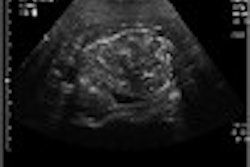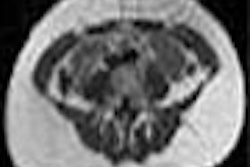When it comes to gauging calcium in the coronary arteries, calcium mass is more accurate, less variable, and more reproducible than volume or Agatston-score measurements, according to researchers from the Mallinckrodt Institute of Radiology in St. Louis.
Writing in the June issue of Radiology, Dr. Chen Hong, Dr. Tae Bae, and colleagues from the Mallinckrodt Institute also found that varying the Hounsfield unit threshold in response to calcium density also increased the accuracy of the multidetector-row CT exams (Radiology, June 2003, Vol. 227:3, pp. 795-801).
Other recent studies have also favored calcium mass, offering at least a preliminary answer to the question of which method might eventually replace standard Agatston scoring, which suffers from poor reproducibility.
The gold standard for decades running, Agatston scoring takes a somewhat tortured path to calcium quantification, measuring the area of calcified plaque and multiplying it by a scaling cofactor based on the peak attenuation of two adjacent pixels in a calcified lesion.
"Excellent observer and interobserver agreement for calcium quantification for each scan could be achieved by using this (Agatston) scoring system in electron-beam CT, but the interscan variability of the scores is rather high, in part, as a result of the arbitrariness of the scaling cofactor used to calculate the score," Hong and colleagues wrote. "To improve interscan reproducibility, Callister et al propose an alternative scoring method based on calcium volume measurement. More recently, calcium mass is suggested to offer a more accurate quantification of the coronary calcium burden," (Radiology, September 1998, Vol. 208:3, pp. 807-814; Radiology, April 2002, Vol. 223:1, pp. 474-480).
Multidetector-row CT exams have previously shown a high correlation with their electron-beam CT counterparts for calcium scoring, but the current study sought to determine whether the traditional 130-HU Agatston threshold is optimal for MDCT, and also whether mass- and volume-based algorithms can improve reproducibility over the Agatston score.
To determine absolute calcium mass, the group used an anthropomorphic heart CT phantom (QRM, Moehrendorf, Germany) containing inserts of 200, 400, and 800 mg/cm3 calcium hydroxyapatite (CaHA).
In the clinical arm of the study, 32 consecutive patients (10 women and 22 men, aged 36-78, mean age 56 years, mean heart rate 72 beats per minute), were recruited, offering their informed consent to be scanned twice in order to gauge the reproducibility of the exam. No patients had acute chest pain or other cardiac-related symptoms, the authors wrote.
A Somatom Plus 4 Volume Zoom scanner (Siemens Medical Solutions, Malvern, PA) was used to acquire images in a single breathhold using 4 x 2.5-mm collimation, 120 kVp, 100 mAs, one half-second gantry rotation, and prospective electrocardiographic triggering at 50% to 60% of the RR interval.
The calcified cylinders were identified with CT thresholds ranging from 80 to 230 HU. A calibration factor was developed based on the difference in CT attenuation between the CaHA and the water inserts in the phantom. This factor was then used to compute the CaHA mass from the measured volume and mean CT value of the CaHA. The CaHA volume of the calcified cylinders was determined by means of an isotropic interpolation algorithm.
The investigators measured the Agatston calcium score, volume, and mass in the left main, left anterior descending, circumflex, and right coronary arteries.
In the phantom, the mass measurements varied with threshold and CaHA density (P<.01), and there was a clear tendency for volume error to decrease as the CT threshold increased (r=-.0.50, P<0.01), the authors wrote. Mass error was strongly correlated with volume error (r=0.91, P<0.01) but mass held to a smaller range. There was also a tendency for mass error to increase with CT threshold increases (r=0.46, P<0.01), but in contrast to the volume measurements, mass tended to be underestimated at most CT thresholds.
Interscan variability was significantly lower for mass measurements compared to both volume and Agatston score, both in patients and in the phantoms.
In the clinical study, 29 patients had a positive calcium score for both the 130- and 90- HU thresholds, including 10 patients who scored less than 3; 11 who scored 10-99; 10 who scored 100-399; and five who scored 400 or higher.
"At the 130-HU threshold, mean interscan variability was largest with the Agatston score (20.4%), smallest with mass (9.3%), and in the middle with volume (13.9%)," the authors wrote. "Differences were statistically significant between mass and score (paired t test, P=0.005) and between mass and volume (paired t test, P=0.2), but not between volume and score (paired t test, P=0.09). Linear regression analysis showed that measurements with scans 1 and 2 were highly correlated for all methods, and that the mass measurements had an almost exact one-to-one correspondence (r>0.99, P<0.01). Mean image noise was 14.3 HU."
At the 90-HU threshold, mean interscan variability was once again largest with the Agatston score (22.7%), smallest with mass (9.4%), and between the two with volume (14.7%).
"Results in our study demonstrate that measurement variation is substantially smaller with the calcium mass method than with the calcium volume method," Hong and colleagues wrote. "Two parameters that affect the variation in calcium measurements are CT threshold and CaHA density, as shown in the phantom study. These findings suggest that accurate prediction of calcium volume and mass may require different CT thresholds for calcified plaques with different density."
With increased use of spiral CT, 3-D quantification algorithms may replace the 2-D Agatston score, they added. "Since structural information about the calcified plaques can be revealed by the mass index, there is great potential that calcium mass quantification will be increasingly accepted as a tool with which to assess coronary artery disease."
By Eric BarnesAuntMinnie.com staff writer
June 17, 2003
Related Reading
Thin slices, quality assurance improve calcium scoring, April 16, 2003
Standard, low-dose CT calcium screening yield equivalent results, March 10, 2003
New techniques boost accuracy of coronary calcium assessment, March 5, 2003
Study finds blacks have less coronary calcium than whites, February 17, 2003
Thin-collimation MDCT identifies more coronary calcium, December 18, 2002
Population-based study links coronary calcium and mortality, December 1, 2002
Technology keeps CT vital for coronary assessment, November 13, 2002
Copyright © 2003 AuntMinnie.com




















